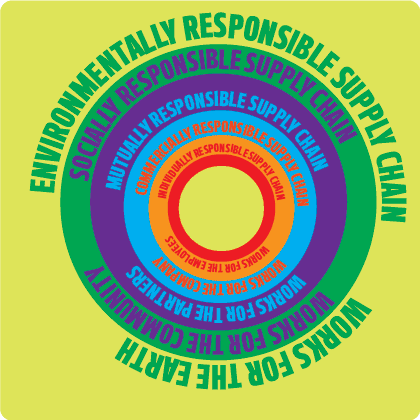Description
SETTING A NEW STANDARD OF SUPPLY CHAIN SUSTAINABILITY AND PROFITABILITY
In many ways, the meaning of Supply Chain Sustainability should be self-evident.
However, a casual study or even deep research of available material shows extra-ordinary amount of confusion about both Sustainability and Supply Chain.
What do we mean by that?
To give you an example, many highly regarded inter-governmental bodies use Supplier Management interchangeably with Supply Chain Management.
From reading relevant literature on the topic issued by them, it appears they confuse Procurement or Strategic Sourcing or Supplier Management with Supply Chain Management.
There is a vast difference between the two, where the former is a subset of the latter.
There are many good books on the definition of Supply Chain Management, and we will not go into that in too much detail here – but suffice it to note here that it includes much besides Procurement – e.g. Planning, Scheduling and Execution of Inventories, Production, Logistics, Transportation, Demand, and Supply.
The word Sustainability should be rather easy to define and elaborate.
However, we find most coverage of that word incomplete.
Either it is taken to mean environmentally responsible or socially responsible or some aggregate of the two.
However, clearly, a Sustainable Supply Chain has to be able to sustain the business and vice-versa over a long term.
In order to do that, it must be able to provide sustainability at several levels – global level, community level, supply chain level, and corporate level.
Our framework is explained in the figure given below.

As shown in the figure with concentric circles, there are five levels of sustainability for each supply chain:-
1. Environmentally Responsible Supply Chain – Sustainable For The Globe
At this level our primary focus is on making sure that the environment of the earth (so far – perhaps other planets or moons in future, if appropriate) are not degraded in our pursuit of profit so that the quality of life depreciates. This is also termed Green Supply Chains and we will cover this topic in some detail later in this course.
2. Socially Responsible Supply Chain – Sustainable For The Community
At this level, our primary focus is on the society or the community in which the supply chain is operating. We want to make sure that the communities of societies do not suffer the degradation of the quality of life as a result of the activities of the supply chains in those communities. We will cover this topic in detail in Chapter 2.2.
3. Mutually Responsible Supply Chain – Sustainable For Supply Chain Partners
At this level, our focus is on all the supply chain partners in the Supply Chain making sure that the supply chain relationships are not coercive, extortive or corrupt and they are structured for mutual benefits of the relevant supply chain partners for the appropriate time frames. We will cover this in Chapter 2.3.
4. Commercially Responsible Supply Chain – Sustainable For The Corporation
All of the above would make sense only if the corporation is able to make a profit with integrity out of the supply chain relationship. Our focus now has shifted to the individual corporation within the Supply Chain and its sustainability over the long term through the supply chain relationships it has created. We will cover this in Chapter 2.4.
5. Individually Responsible Supply Chain – Sustainable For The Individuals Working Inside The Corporation
No one wants to work in abusive, bullying, threatening, unsafe or dead-end jobs.
If the individuals do not find succour in the jobs within the company, eventually the company will lose good people and find that its most important resources have abandoned it.
Properly, this topic is better addressed in books on Human Resource Development, Leadership, Mentoring etc. While we might have a lot to say on the topic – we will leave it unsaid in this course, because there is plenty to cover on the other 4 topics above.
Moreover, we believe people like Simon Sinek, Stephen Covey, or Peter Senge do a much better job than we could do to cover this topic.
In the rest of this course, we will discuss the first four of the above in much greater detail.




Reviews
There are no reviews yet.